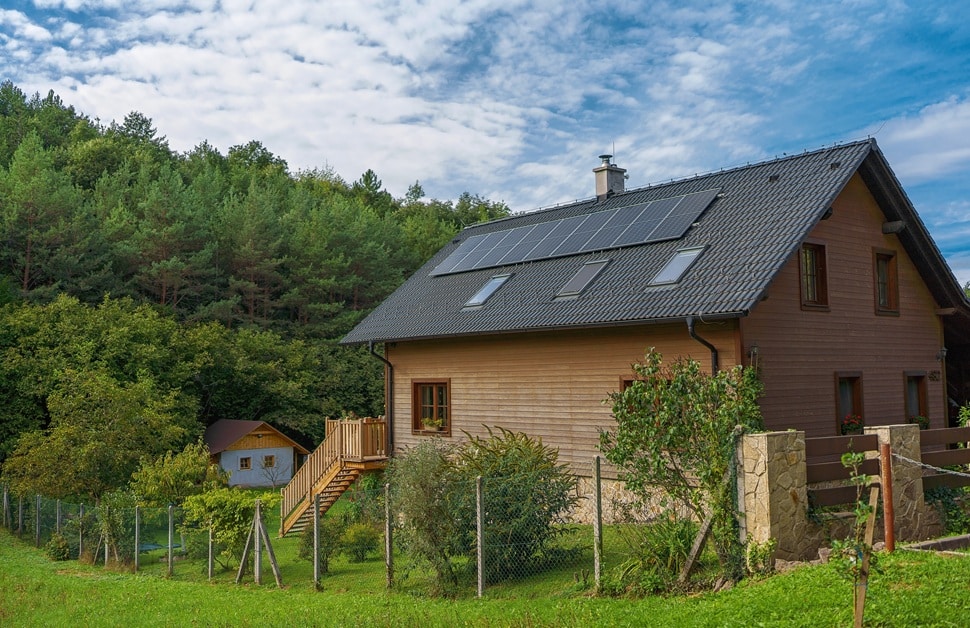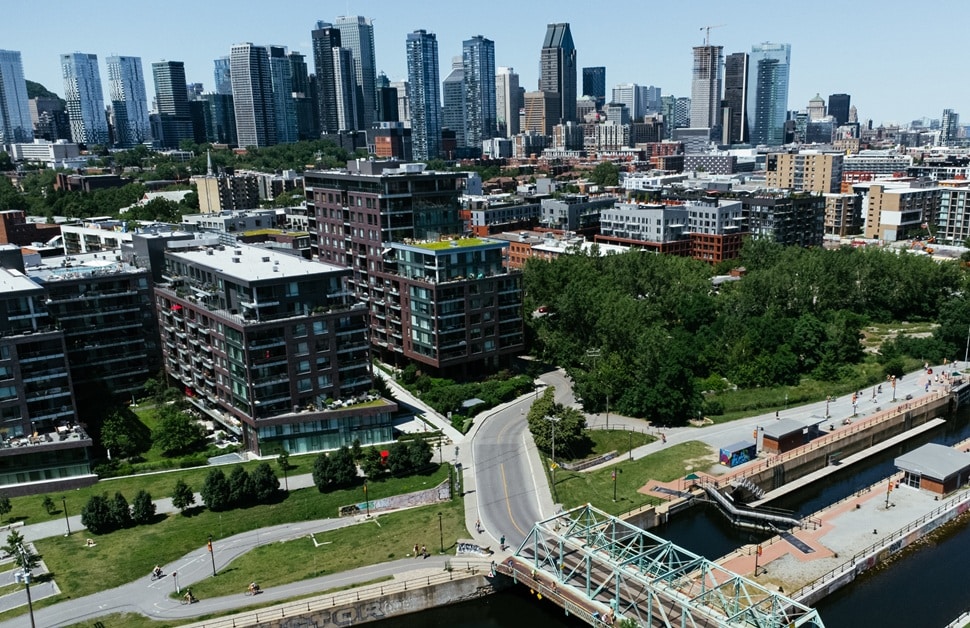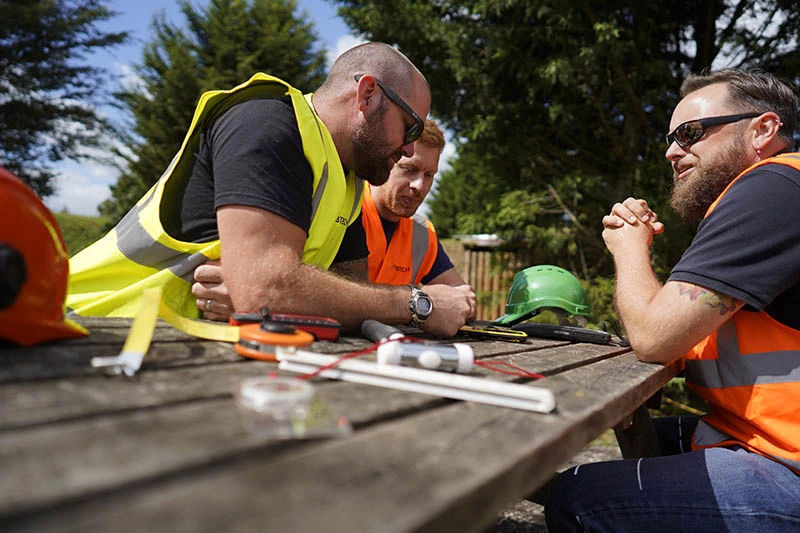
Why Green Infrastructure Matters in Modern Development
Different types of infrastructure meet various needs and requirements. For instance, while grey infrastructure consists of built structures, green infrastructure makes up the connected network of green and blue infrastructure, supporting both people and nature. With infrastructure that is considered green or blue, the main aim is to combine green space, natural areas and features like urban tree canopy into a wider system.
A green infrastructure approach works with natural processes, bringing multiple environmental benefits to support air quality improvements, climate regulation, nature recovery and water purification. As the number of new developments grows and existing urban areas continue to expand, integrating nature-based solutions into planning activities helps to tackle climate change and enhance health, resilience and wellbeing.
What is Green Infrastructure Planning?
Green infrastructure planning is the process of identifying, designing and managing the wide network of available natural and semi-natural spaces throughout a development project.
By using green infrastructure planning, a developer can work sustainable practices and materials into the scheme, including green roofs, open spaces, street trees, sustainable drainage systems (SuDS) and considerations around biodiversity, cooling, ecosystem services and flood protection.
Affected Clients and Sectors
In terms of the types of clients and sectors that are typically affected by the need for green infrastructure planning, common examples include:
- Colleges, Schools and Universities
- Community Groups Seeking Further Information on Green Space Projects
- Infrastructure and Utilities Providers Balancing Grey, Blue and Green Infrastructure
- Landowners Managing Public Recreation Areas and Playing Fields
- Local Councils Planning for Growth and Resilience
- Housing Developers Delivering New Developments
Green Infrastructure Policies and Legislation
The concept of using green infrastructure within a development scheme appears throughout national frameworks and standards, legal instruments and regulations, and region-specific policies, such as:
National Frameworks and Standards
- 25-Year Environment Plan (25YEP) – Green Infrastructure Standards
- Local Nature Recovery Strategies
- National Planning Policy Framework (NPPF)
- National Nature Recovery Network
- Natural England’s Green Infrastructure Network
Legal Instruments and Regulations
- The Environment Act 2021
- The Infrastructure Act 2015
- The Levelling-Up and Regeneration Act 2023
- The Planning Act 2008
- The Town and Country Planning Act 1990
Region-Specific Policies
- London Plan – Policy G6
- Scotland’s NPF4 – Green/Blue Infrastructure Requirement
- Wales – Wellbeing of Future Generations Act and Environment (Wales) Act 2015
Why is Green Infrastructure Planning Necessary?
In modern development, green infrastructure planning is a necessity. Urban areas are always expanding, and between that and new projects, careful planning is needed to release the pressure on the environment and ensure that natural features are protected and enhanced.
Without proper organisation, valuable green spaces, semi-natural areas and open spaces can be fragmented, leading to reduced ecosystem services such as cleaner air, climate regulation and water purification.
Under a green infrastructure approach within the planning process, the spaces can be both protected and connected into a wider network that benefits both people and nature.
Local planning authorities now consider the use of green infrastructure in their decision-making when it comes to planning applications. Organisations such as Natural England and the Landscape Institute (LI) offer frameworks and a design guide for best practice.
An example of how it has become such a big part of planning is the introduction of biodiversity net gain (BNG), which insists on measurable improvements to the environment following the creation or renovation of applicable infrastructure from 2024.
Benefits of Integrating Green Infrastructure
By working green infrastructure into your development plans, you can:
- Create Better Air Quality in Urban Areas
- Encourage Stronger Connections Across the Joined-Up System of Green Space
- Heighten Flood Protection Through SuDS
- Increase Resilience to Climate Change
- Make New Developments More Attractive and Livable
- Support Ecosystem Services like Water Purification
Green Infrastructure Framework
Based on a comprehensive framework, green infrastructure uses a cohesive strategy that accounts for all natural features on a development site and potential new elements that would improve ecological value.
Across the framework, both developers and local authorities can work natural processes and assets into every stage of the planning process.
Principles of Green Infrastructure Planning
When it comes to green infrastructure planning, the primary principles are:
- Creating a Wider Network that Links Green Spaces and Open Spaces
- Embedding Climate Regulation and Nature Recovery into Planning
- Improving Community Health and Quality of Life with More Space and Trees
- Securing Long-Term Environmental Benefits and Ecosystem Services
- Working with Natural Processes Rather than Solely Relying on Grey Infrastructure
Tools in Green Infrastructure Planning
For more of an indication of what green infrastructure services involve, below we’ve created a list of the commonly used tools, equipment, resources and technology:
- Air Quality Monitors
- Biodiversity Net Gain (BNG) Metric Tools
- Climate Modelling Software
- Design Guides and Standards
- GIS Software (ArcGIS, QGIS)
- Landscape Design Software
- Remote Sensing
- Satellite Imagery
- Soil Testing Kits
- Tree Survey Equipment
- Urban Greening Calculators
- Water Monitoring Equipment
Green Infrastructure Assessment
With the help of a green infrastructure assessment, you can put together a detailed picture of what assets already exist and where opportunities for improvements lie.
A foundation for planning in a sustainable manner, steps in a green infrastructure assessment are:
- Baseline Mapping of the Area (including all natural and semi-natural features)
- Engagement with Relevant Stakeholders
- Identification of Areas that Support Biodiversity and the Ecosystem
- Analysis of Sustainable Drainage Systems (SuDS) and Integration with Grey Infrastructure
- Review of Policy Requirements from Natural England, the LI and the Local Authorities
- Measurement of Environmental Quality Through Improved Air and Water, Cooling and Flood Reduction
- Highlight of Opportunities for Nature Recovery and Introduction of Nature-Based Solutions
The outcome of an assessment would then consist of clear evidence showing where the current green infrastructure approach is strong, where gaps exist, and how improvements can be prioritised.
Green Infrastructure Strategy
Following an assessment, a green infrastructure strategy can be used to set out how exactly to move forward.
In simple terms, it transforms the evidence from the assessment into an impactful and relevant long-term plan.
Components in a green infrastructure strategy:
Vision and Objectives
Defines how green and blue infrastructure will address air quality, climate change and community needs
Policy Alignment
Guarantees compliance with Natural England, the Landscape Institute (LI) and local authority design guides
Network Design
Connects green and open space, street trees and semi-natural areas into a coherent wider network
Integration with Development
Partner green roofs, SuDS and nature-based solutions into new developments
Implementation Plan
Sets out the actions, funding options and responsibilities for communities, developers and local authorities
Monitoring and Review
Tracks the delivery of the ecosystem services, space for adaptive management and a grasp of the long-term advantages on the environment.
The strategy provides decision-makers involved in the planning process with a clear roadmap for balancing grey infrastructure with a sustainable green infrastructure approach.

Green Infrastructure Consultancy
Choosing the right consultancy for help with green infrastructure planning could be the difference between a successful and unsuccessful project. Or at least one with or without potentially costly and lengthy delays.
Our team provides tailored support to help with a number of aspects surrounding green infrastructure. Not only can we carry out assessments and put together strategies, but we can also help out with additional services, such as policy reviews, stakeholder engagement and technical design advice.
Green Infrastructure Consultants
In addition to ecology, arboriculture, archaeology, flood risk, land contamination, air and water quality and many other services, we also cater to matters affecting and affected by the landscape, such as green infrastructure assessments and strategies. For help with your design, we can easily instruct a green infrastructure consultant to advise on your plans.
After years of experience, we’ve seen it all and know exactly what to do in any situation, helped by a wealth of knowledge when it comes to planning, the effect it has on the environment, and the steps needed to show consideration of laws around conservation, preservation and protection.
Ask for Green Infrastructure Planning Guidance
If you’re ready to explore how a green infrastructure approach can boost the credibility of your development, meet the requirements of your planning officer, contribute to the fight against climate change, and deliver lasting environmental improvements.
For further information on what Arbtech can do for you or if you want a free quote for green infrastructure consulting services on your development site, contact our team online, over the phone or via email, and we will happily talk you through your options.


